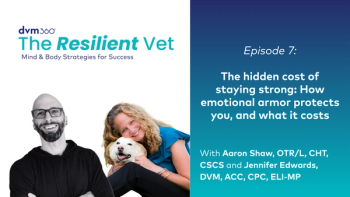
Id never lost a patient without being able to explain why ...
This textbook veterinary surgery went according to textbookuntil the patient didnt wake up.
(Shutterstock.com)After my freshman year of college, I decided to pursue veterinary medicine and quickly found a job in the field to make sure I could stand the sight of blood. I started work at a small, one-doctor hospital where the practice owner was at the tail end of his career. To use the term “old school” would be appropriate, as it was 1998 and he still wasn't using gas anesthesia. He strictly used ketamine for all anesthetic procedures. No monitoring. No analgesia. Certainly, these practices wouldn't be acceptable today, and I'm sure many patients went through more pain than they should have. But in over 40 years of practice, he never lost a patient under anesthesia.
Once out of veterinary school, I found a job at a progressive hospital that was applying modern-day, multimodal anesthesia and had state-of-the-art anesthetic monitoring equipment. For a new graduate, the awesome responsibility of having a patient under anesthesia is one of the most nerve-racking aspects of the job. But by applying the principles I'd learned in school and working at a hospital that was providing everything it should, I expected to have the same track record as my old-school mentor.
As years passed, my comfort and confidence with anesthesia grew. In the beginning, I would emphasize the risk of anesthesia when asking owners to sign the release form. But over time, this emphasis with owners lessened. Routine surgeries became just that-routine-and going over release forms was merely a necessary but burdensome task.
For high-risk procedures, such as a patient with advanced heart disease or cancer, I would still engage in in-depth discussions about anesthesia risks. And if the outcome of the discussion was that we both believed the risk was worth the potential reward for the pet, I was not shy to assume those risks. With our sound preanesthetic requirements and anesthetic monitoring, we usually had a good outcome. I've lost a few of these patients over the years, but both owner and myself had known the risks going into it. We also knew we'd done our best and accepted the outcome.
That changed recently. I went into the exam room to check in one of my surgery patients. This was a family I'd known for a while, as we'd had our shares of ups and downs with a previous pet that had died two years earlier. The new pet was a Great Dane rescue, and it was time for her ovariohysterectomy. We chatted and I went over the release form quickly-as this was familiar to the owner and I had another patient to check on in the next room.
A few hours later, I placed the final suture on the Great Dane. Normally, I would be off to type in the patient's medical record or make a phone call. But because the dog was so large, I stayed to help her off the surgery table and onto the recovery mat. Once on the mat, I felt her pulse and waited for a breath. Thirty seconds might have gone by and I was still waiting. I asked my technician if she'd seen a breath. I pulled out my stethoscope and couldn't auscult the heart. We rushed her up to the treatment table. Five minutes of CPR, and nothing. Despite my fatigue I continued a couple more minutes because I was in disbelief.
I had never lost a patient without being able to explain why. I quickly had the technicians take some radiographs of the dog's chest. Did she have dilated cardiomyopathy without me knowing, I wondered? No. I reviewed the anesthetic report, and there was nothing unusual.
I then had to make that phone call. These phone calls are never easy, but this one was unfathomable. The owner asked if I was kidding. I gave her the details and explained that I didn't know why the dog had died. I'm sure she heard little. Ten minutes later, I received a call from her husband, who was even more upset.
I waited an hour for them to arrive. They visited their pet and then sat in angry silence. I offered a necropsy or referral to the pathologist at the local university. They declined both and asked to have the dog cremated. I felt terrible.
Part of our profession is losing patients-you just hope the next appointment is a puppy and you can go home and your family is none the wiser. Not so with this loss. My family could tell I was down. My team knew I was dragging. But you have to go on doing quality medicine, aiming for each day to be better than the last.
Last week, this same family came back to our hospital with a new Great Dane rescue and asked to see me. At the end of the appointment, they thanked me for everything I had done. I don't usually need acknowledgments, but this one meant something to me.
Dr. Andrew Rollo is a Veterinary Economics Editorial Advisory Board member and an associate at Madison Veterinary Hospital in Michigan.
Newsletter
From exam room tips to practice management insights, get trusted veterinary news delivered straight to your inbox—subscribe to dvm360.




